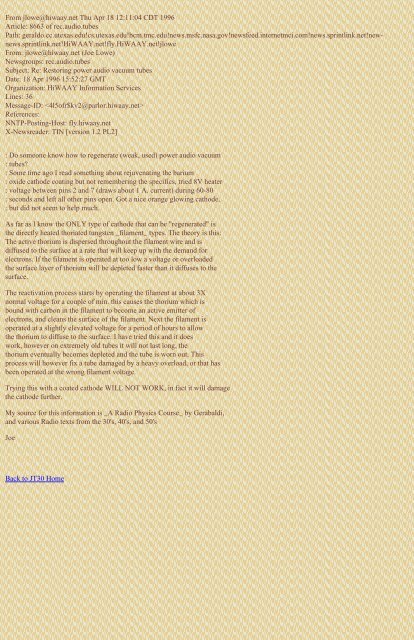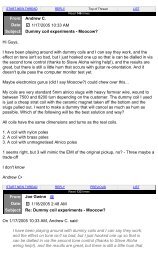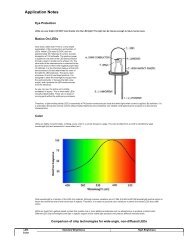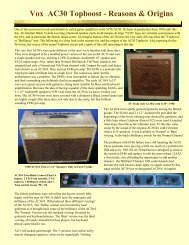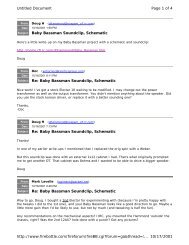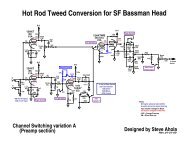Mic Kaczmarczik's TubeInformation - The Blue Guitar
Mic Kaczmarczik's TubeInformation - The Blue Guitar
Mic Kaczmarczik's TubeInformation - The Blue Guitar
You also want an ePaper? Increase the reach of your titles
YUMPU automatically turns print PDFs into web optimized ePapers that Google loves.
From jlowe@hiwaay.net Thu Apr 18 12:11:04 CDT 1996<br />
Article: 8663 of rec.audio.tubes<br />
Path: geraldo.cc.utexas.edu!cs.utexas.edu!bcm.tmc.edu!news.msfc.nasa.gov!newsfeed.internetmci.com!news.sprintlink.net!newnews.sprintlink.net!HiWAAY.net!fly.HiWAAY.net!jlowe<br />
From: jlowe@hiwaay.net (Joe Lowe)<br />
Newsgroups: rec.audio.tubes<br />
Subject: Re: Restoring power audio vacuum tubes<br />
Date: 18 Apr 1996 15:52:27 GMT<br />
Organization: HiWAAY Information Services<br />
Lines: 36<br />
Message-ID: <br />
References:<br />
NNTP-Posting-Host: fly.hiwaay.net<br />
X-Newsreader: TIN [version 1.2 PL2]<br />
: Do someone know how to regenerate (weak, used) power audio vacuum<br />
: tubes?<br />
: Some time ago I read something about rejuvenating the barium<br />
: oxide cathode coating but not remembering the specifics, tried 8V heater<br />
: voltage between pins 2 and 7 (draws about 1 A. current) during 60-80<br />
: seconds and left all other pins open. Got a nice orange glowing cathode,<br />
: but did not seem to help much.<br />
As far as I know the ONLY type of cathode that can be "regenerated" is<br />
the directly heated thoriated tungsten _filament_ types. <strong>The</strong> theory is this:<br />
<strong>The</strong> active thorium is dispersed throughout the filament wire and is<br />
diffused to the surface at a rate that will keep up with the demand for<br />
electrons. If the filament is operated at too low a voltage or overloaded<br />
the surface layer of thorium will be depleted faster than it diffuses to the<br />
surface.<br />
<strong>The</strong> reactivation process starts by operating the filament at about 3X<br />
normal voltage for a couple of min. this causes the thorium which is<br />
bound with carbon in the filament to become an active emitter of<br />
electrons, and cleans the surface of the filament. Next the filament is<br />
operated at a slightly elevated voltage for a period of hours to allow<br />
the thorium to diffuse to the surface. I have tried this and it does<br />
work, however on extremely old tubes it will not last long, the<br />
thorium eventually becomes depleted and the tube is worn out. This<br />
process will however fix a tube damaged by a heavy overload, or that has<br />
been operated at the wrong filament voltage.<br />
Trying this with a coated cathode WILL NOT WORK, in fact it will damage<br />
the cathode further.<br />
My source for this information is _A Radio Physics Course_ by Gerabaldi,<br />
and various Radio texts from the 30's, 40's, and 50's<br />
Joe<br />
Back to JT30 Home


